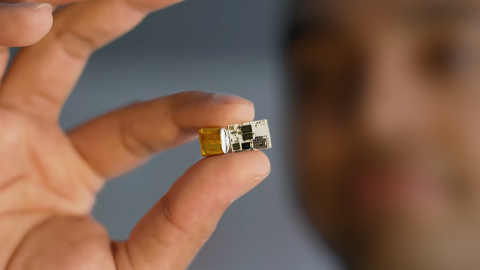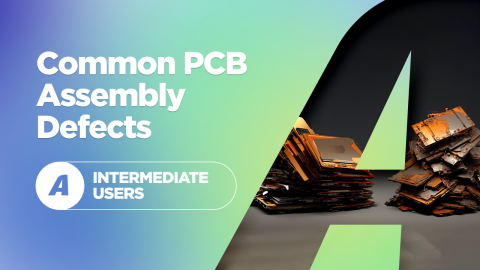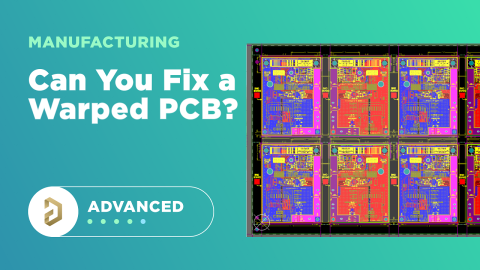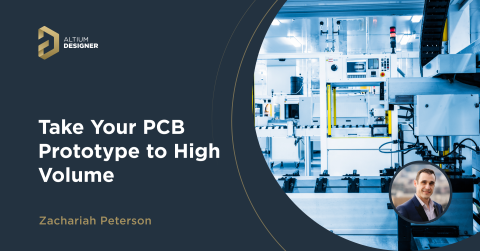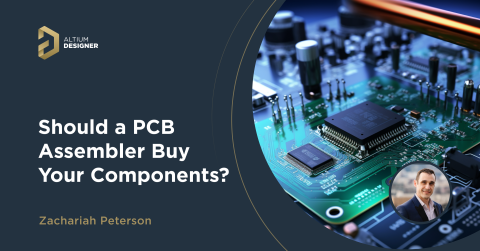Volume in Your First PCB Manufacturing Run

Transitioning to your first production run can be nerve-wracking and it will be fraught with risk. All that work developing and testing prototypes, the time spent poring over datasheets, the time spent analyzing test data, and the headache of managing each prototype spin have all culminated in this moment. Now, your first production run is looming, and there is one question that needs to be carefully considered: what volume should you produce on your first run?
If you're producing a product that will be scaled to millions of units, you probably don't want to start by producing millions of units on the first run, especially when quality has not been proven in volume manufacturing. However, the production run needs to be large enough that you can get a statistically significant sample of fabricated boards and assemblies in multiple tests.
The boards in your first run can be used for customer trials, field tests, quality inspections, and stress testing. Once failures are determined in this stage, this gives the manufacturer time to fine-tune the manufacturing process for maximum yield of your product.
What's the Best First-Run Production Volume?
Production volume in your very first manufacturing run depends on multiple factors. Typically, this portion of product development offers an opportunity to produce a small number of units within your intended process, inclusive of fabrication, assembly, testing, packaging, and shipping. This is the ideal time to identify any roadblocks or quality challenges in the manufacturing process so that they can be corrected before scaling to higher volume.
In the first production run, you will need to determine a specific number of boards or assemblies that will be produced for customers and the number to be inspected. The first articles produced can be subject to various tests in batches, as well as sent out to the field for operational testing. The volume required will need to be allocated to these tasks:
- Pilot programs with customers
- Defect inspection
- Field testing with the engineering team
- Mechanical or thermal testing, possibly via shock testing
- Burn-in testing or accelerated life testing
It’s possible that most of the first run production units will go to final testing and quality inspection, rather than being deployed in the field. This does not mean that the only boards you'll be buying will be tested, you can still produce for customers, both under a pilot program or to satisfy customer purchase orders. This normally happens after prototype testing and final design updates.
The table below gives an example schedule showing first run production volumes with allocation for testing.
|
Pilot programs |
|
|
Field testing |
|
|
Accelerated lifetime testing |
|
|
Defect inspection |
|
From looking at the above list, it looks like your first production run is not a production run at all, it’s just a larger prototyping run! Indeed, this is the case if we ignore the pilot program volume. What we are really doing is attempting to serve the initial customers with first production units while locating the main problems that can lead to yield reduction or early failure.
Ideally, some of this happens during prototyping, but the difference is that prototyping would normally be performed at lower volume and thus testing may not give a full picture of possible defects in the final product. Prototyping may also occur via a different production process compared to volume production, which is also why it is important to perform these quality inspections. In the defense world, this more conservative approach is actually standardized and it can be implemented for commercial products that demand high reliability.
The Defense Equivalent: Low Rate Initial Production
PCB designers and engineers who work in the defense industry follow a very similar concept, known as low rate initial production (LRIP). Just like in the commercial world, there is no specific volume in LRIP, the volume depends on several factors and the number of boards required for assessing quality and field failure. This precedes full rate production (FRP), where the product is manufactured at maximum possible volume and delivered to end customers.
LRIP in defense production is also like a final prototyping run that intends to resemble as closely as possible the end product that will be sold to customers at scale. The process has more oversight, but the end goal is simple: identify defects and failures early before scaling to very high volume.
Identify Root Causes and Get Feedback
This first run is the perfect opportunity to identify root causes of product failure or lowered yield in a controlled manner before scaling to very high volume. Products produced during this time period should be thoroughly inspected for quality problems by both the engineering team and the manufacturer’s quality team; the full burden should not lie just on the engineers.
When failures are identified, feedback on failure mechanisms or defects needs to be given back to the engineering team, including actionable solutions that can be quickly implemented in the design. Once through this initial production phase with any remaining quality problems identified, the product can be further scaled and delivered to customers.
Whether you need to build reliable military PCBs or advanced electronics for commercial systems, use the complete set of PCB design features and world-class CAD tools in Altium Designer®. To implement collaboration in today’s cross-disciplinary environment, innovative companies are using the Altium 365™ platform to easily share design data and put projects into manufacturing.
We have only scratched the surface of what’s possible with Altium Designer on Altium 365. Start your free trial of Altium Designer + Altium 365 today.





